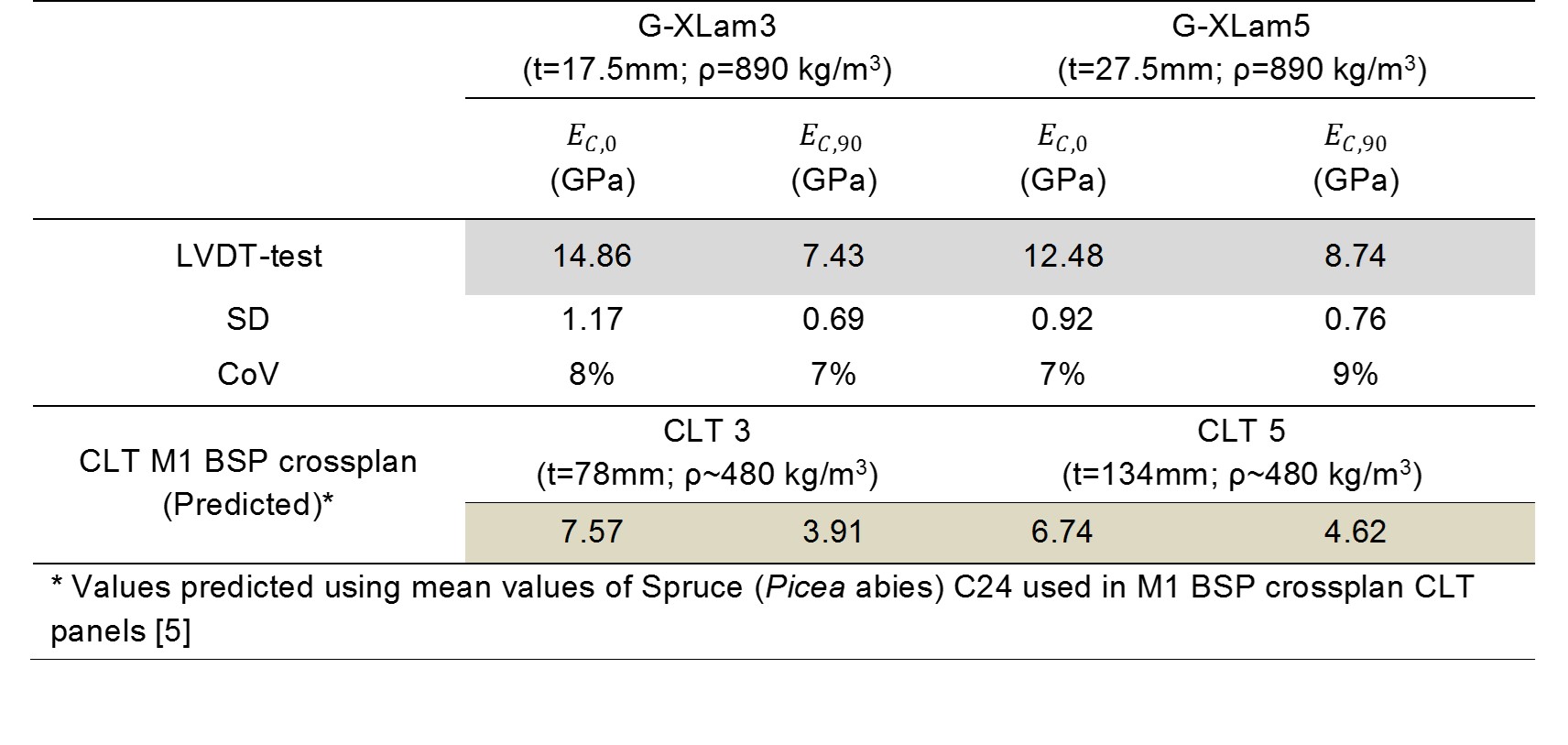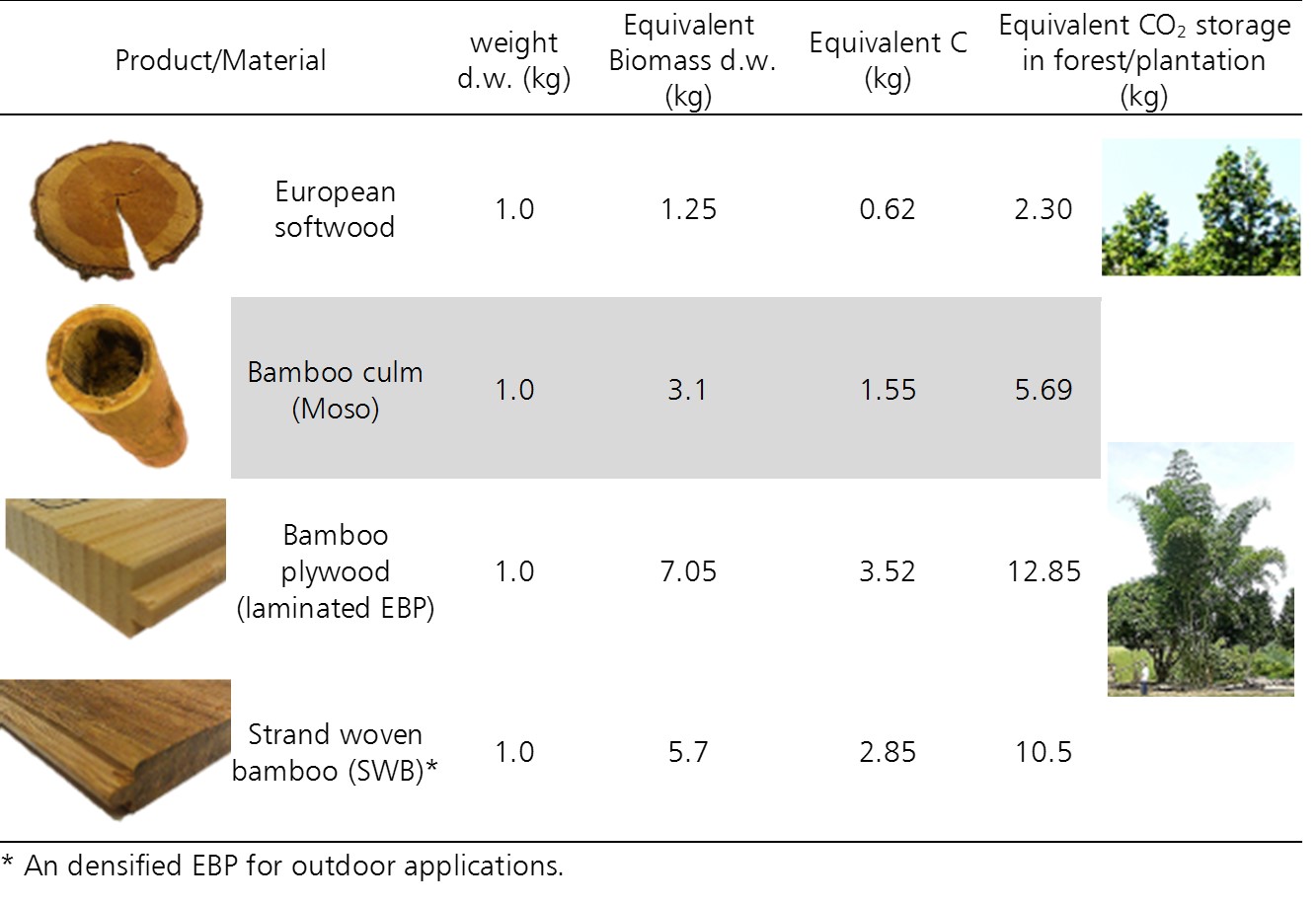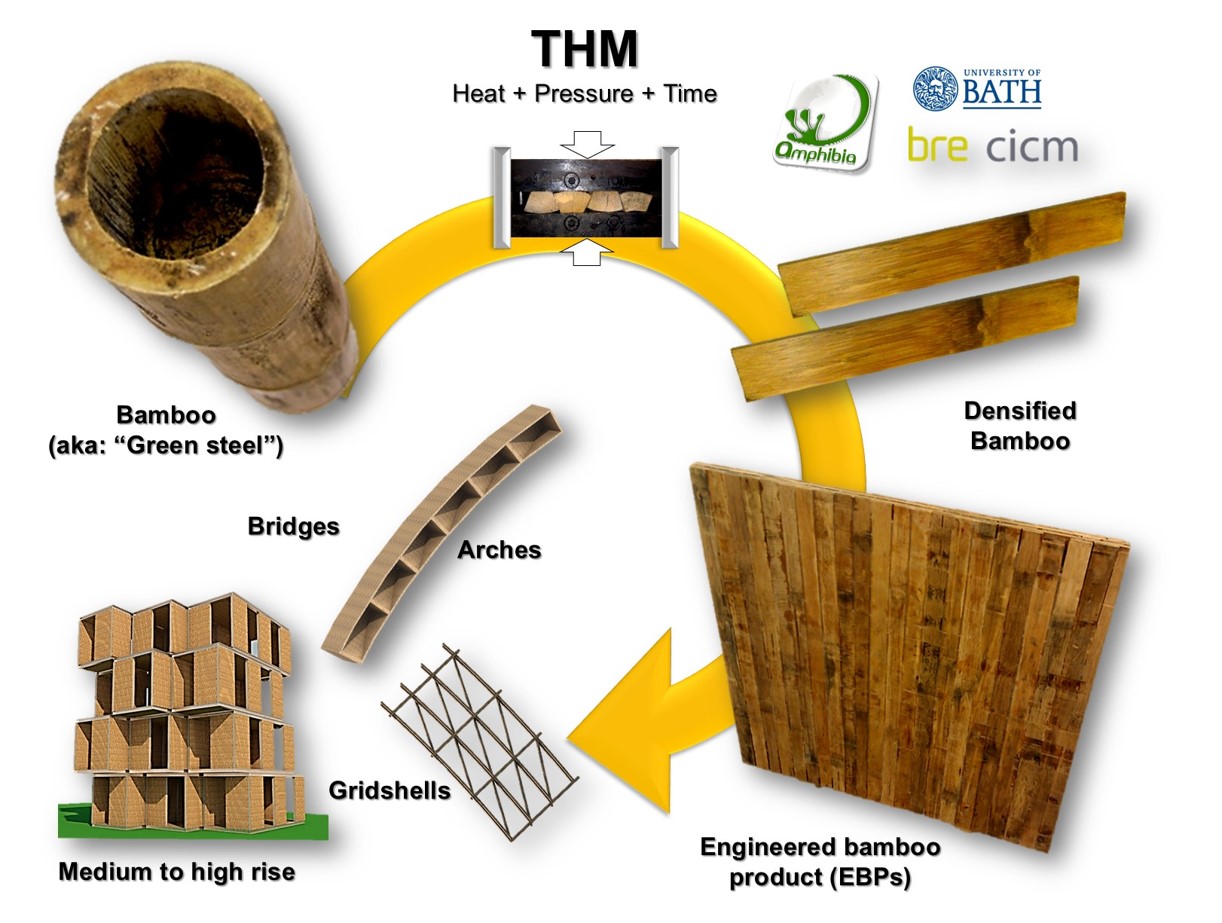Engineered bamboo
Bamboo can be engineered to form products with improved and/or standardised mechanical, physical and aesthetic properties. As in the case for other lignocellulosic materials such as wood, bamboo poles (culms) with variable diameters, lengths and shapes can be transformed into straight edged engineered products with predictable properties for construction applications.
Engineered bamboo products (EBPs) and engineered wood products (EWPs) possess an intrinsic carbon storage capacity, as well as the potential for a lower embodied energy and lower carbon emissions from manufacturing than conventional construction products such as concrete or steel.
For example, the carbon footprint of concrete and stainless steel (304) is two to ten times higher than that of bamboo plywood (a laminated EBP) or an indoor use plywood according to IDEMAT database (2016) [1].
The embodied energy for producing one kilogramme (kg) of stainless steel is almost four times higher than that of producing one kilogramme of plywood [2] or bamboo plywood; 56.70 MJ/kg for the former and 15 MJ/kg and 15.5 for the laminated EBP [1].
Figure 1 illustrates EBP's capability for storing more carbon dioxide (CO2) than the raw and non-processed bamboo culms. There is more CO2 storage equivalent in the bamboo plantation due to the higher use of material per dry weight (d.w.) for the manufacture of EBPs.
Figure 1 Equivalent C02 sequestration in bamboo and wood forest for different bamboo based products. Data from [3].
In addition to bamboo’s remarkable environmental properties and high yield of carbon storing biomass when transformed into durable EBPs, recent research at the University of Bath (UK) has demonstrated potential as a complementary material to wood (rather than a substitute) in structural applications [3].
Cross laminated Guadua-bamboo (G-XLam) panels (Figure 2) developed and tested at the university with the support of British firm Amphibia BASE showed a two-fold increase in density and MOE when compared to analogous cross laminated (CLT) panels (M1 BSP crossplan by Mayr-Melnhof Holz) (Table 1).
That is, the in-plane compression moduli of elasticity of these CLT panels in the main direction (Epc,0) and transverse direction (Epc,90) were about half of that of G-XLam3 and G-XLam5 panels (three and five layers); e.g. Epc,0 was 7.57GPa and 14.83 GPa for CLT3 and G-XLam3 panels.
Figure 2 G-XLam bamboo-Guadua panels for stiffness driven applications
Table 1 Summary of the results obtained from the in-plane compression panel testing and the FE and predicted values previously obtained by [4]
 The thickness of G-XLam3 and G-XLam5 panels is almost a fifth of CLT3 and CLT5 panels (e.g. thicknesses of CLT5 and G-XLam5 were 134mm and 27.5mm, respectively). This is a desirable feature in stiffness driven design but, G-XLam panels possess a high slenderness ratio, which presents a structural challenge in overcoming buckling.
The thickness of G-XLam3 and G-XLam5 panels is almost a fifth of CLT3 and CLT5 panels (e.g. thicknesses of CLT5 and G-XLam5 were 134mm and 27.5mm, respectively). This is a desirable feature in stiffness driven design but, G-XLam panels possess a high slenderness ratio, which presents a structural challenge in overcoming buckling.
Nevertheless, potential engineering applications for G-XLam panels include sandwich panels and stressed skin structures (e.g. monocoques, where thin but very stiff layers are separated by a core or internal structure that increases the second moment of area and reduces buckling.
EBPs such as these G-XLam panels present a new approach to the use of bamboo in structural applications, where bamboo is not seen as substitute, but a complementary material that in combination with wood and/or lightweight cores can provide the required stiffness with reduced cross-sections.
Further testing, research and understanding of the mechanical behaviour of EBPs is required, together with the optimisation of current manufacturing processes and their incorporation within timber standards for structural design.
[edit] Related articles on Designing Buildings Wiki
- Bamboo.
- Bamboo flooring.
- Cedar.
- Click and lock flooring.
- Cross laminated timber.
- Glulam.
- Hex House project.
- Laminated veneer lumber LVL.
- Lime wood.
- Madrid Barajas Airport.
- Modified wood.
- Plywood.
- Skyfarm.
- Softwood.
- Taipei 101.
- Timber.
- Timber vs wood.
- Types of timber.
[edit] External references
[1] Delft University of Technology, “IDEMAT database.” Faculty of Deisgn, Engineering and Production, Delft, 2016.
[2] G. P. Hammond and C. I. Jones, “Embodied energy and carbon in construction materials,” Proceedings of the Institution of Civil Engineers - Energy, vol. 161, pp. 87–98, 2008.
[3] H. F. Archila, “Thermo-hydro-mechanically modified cross-laminated Guadua-bamboo panels,” PhD Thesis, University of Bath, 2015.
[4] H. F. Archila, D. Brandon, M. P. Ansell, P. Walker, and G. A. Ormondroyd, “Evaluation of the mechanical properties of cross laminated bamboo panels by digital image correlation and finite element modelling .,” in WCTE 2014, World Conference on Timber Engineering, 2014, p. 43.
[5] Mayr-Melnhof Kaufmann Group, “Manual Cross-laminated timber panels M1 BSP cross plan,” Austria, 2009.
[6] D. Trujillo and H. F. Archila, “Engineered bamboo and bamboo engineering,” High Wycombe, Buckinghamshire, HP14 4ND, UK, 2016.
Featured articles and news
Ebenezer Howard: inventor of the garden city. Book review.
The Grenfell Tower fire, eight years on
A time to pause and reflect as Dubai tower block fire reported just before anniversary.
Airtightness Topic Guide BSRIA TG 27/2025
Explaining the basics of airtightness, what it is, why it's important, when it's required and how it's carried out.
Construction contract awards hit lowest point of 2025
Plummeting for second consecutive month, intensifying concerns for housing and infrastructure goals.
Understanding Mental Health in the Built Environment 2025
Examining the state of mental health in construction, shedding light on levels of stress, anxiety and depression.
The benefits of engaging with insulation manufacturers
When considering ground floor constructions.
Lighting Industry endorses Blueprint for Electrification
The Lighting Industry Association fully supports the ECA Blueprint as a timely, urgent call to action.
BSRIA Sentinel Clerk of Works Training Case Study
Strengthening expertise to enhance service delivery with integrated cutting-edge industry knowledge.
Impact report from the Supply Chain Sustainability School
Free sustainability skills, training and support delivered to thousands of UK companies to help cut carbon.
The Building Safety Forum at the Installershow 2025
With speakers confirmed for 24 June as part of Building Safety Week.
The UK’s largest air pollution campaign.
Future Homes Standard, now includes solar, but what else?
Will the new standard, due to in the Autumn, go far enough in terms of performance ?
BSRIA Briefing: Cleaner Air, Better tomorrow
A look back at issues relating to inside and outside air quality, discussed during the BSRIA briefing in 2023.
Restoring Abbotsford's hothouse
Bringing the writer Walter Scott's garden to life.
Reflections on the spending review with CIAT.
Retired firefighter cycles world to raise Grenfell funds
Leaving on 14 June 2025 Stephen will raise money for youth and schools through the Grenfell Foundation.
Key points for construction at a glance with industry reactions.
























